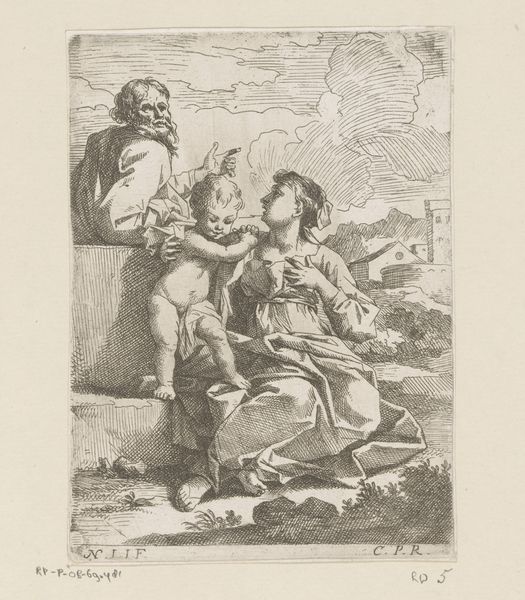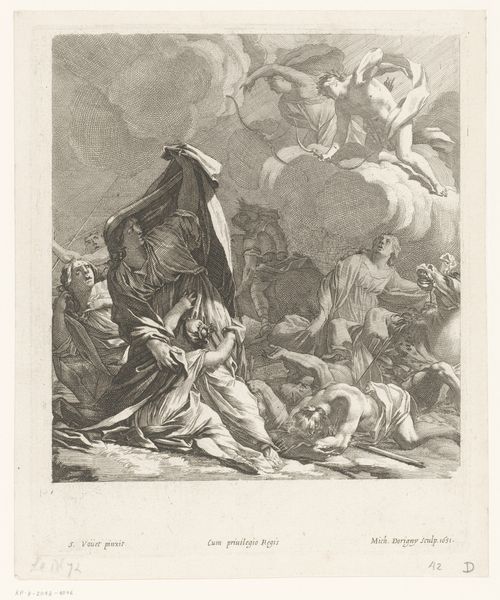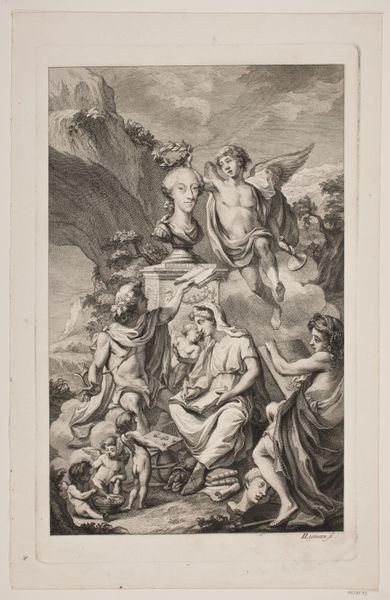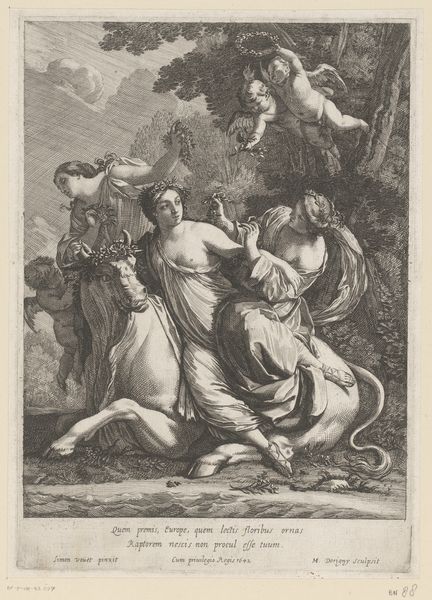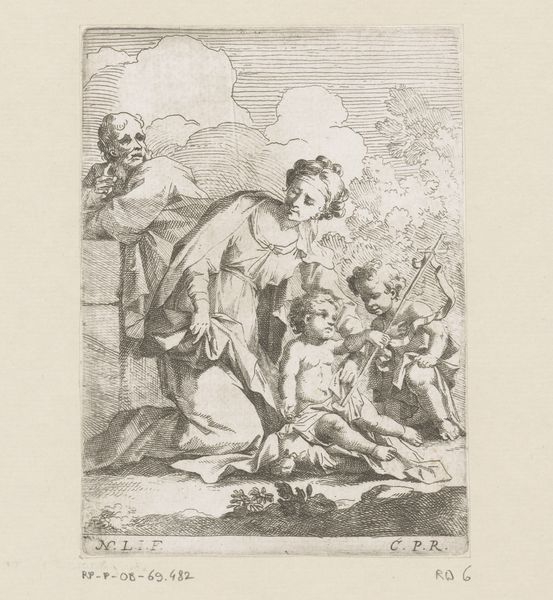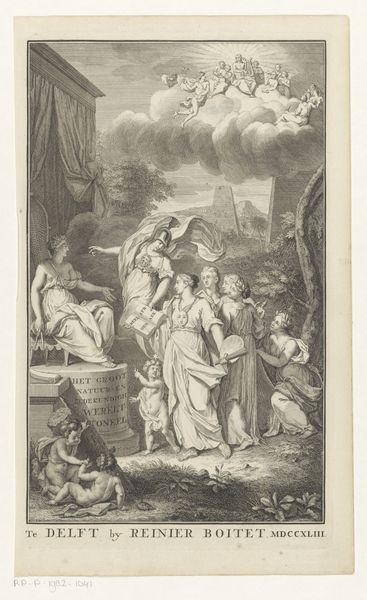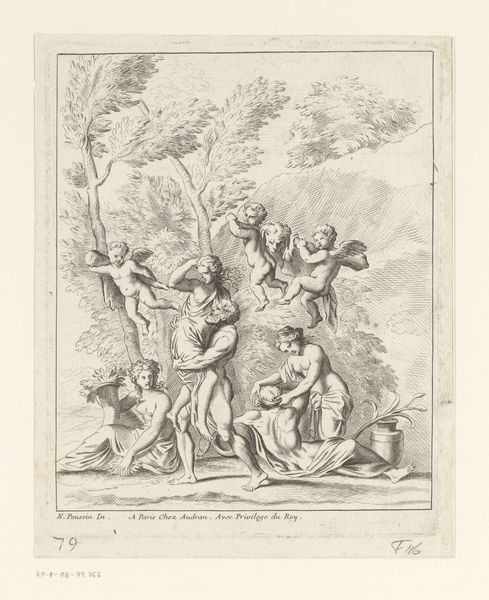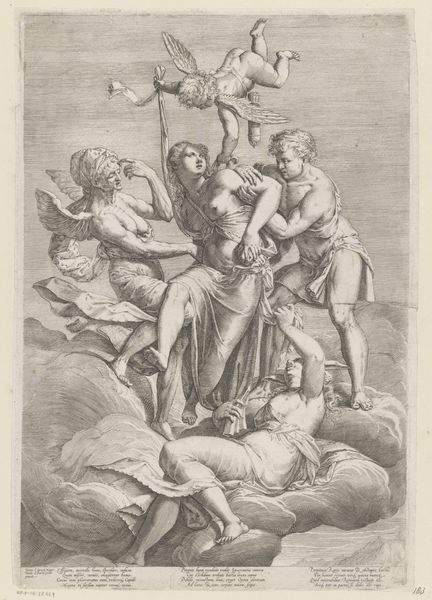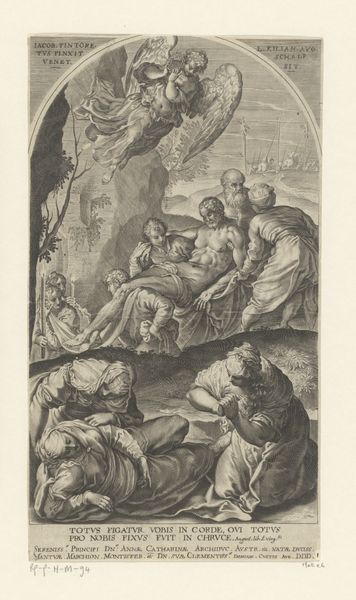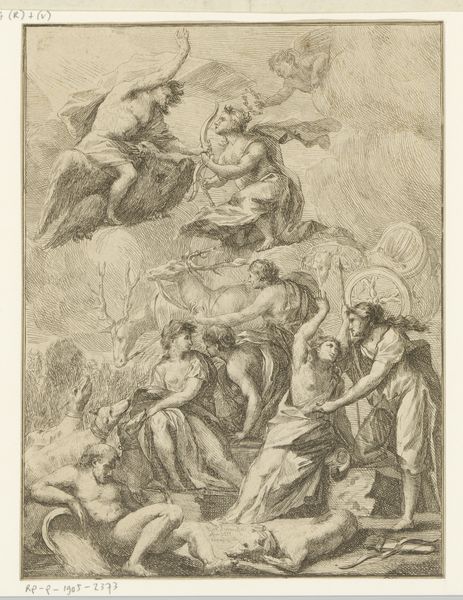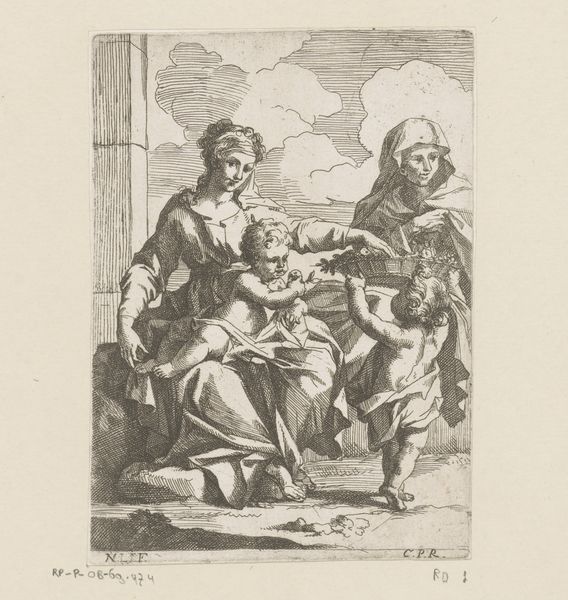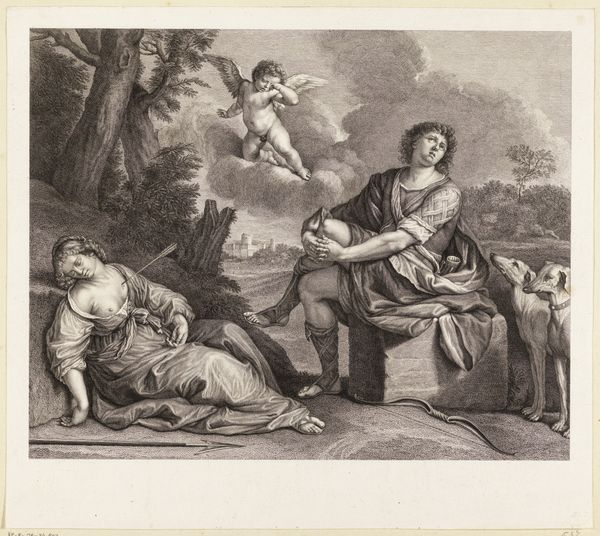
print, engraving
#
baroque
# print
#
old engraving style
#
figuration
#
history-painting
#
engraving
Dimensions: height 150 mm, width 114 mm
Copyright: Rijks Museum: Open Domain
This is Nicolas Pierre Loir’s "Holy Family with John by a Curtain," an etching, made sometime in the mid-17th century. The print is made by incising lines onto a metal plate, inking the surface, and then wiping it clean so that ink remains only in the recesses. When pressed to paper, a mirror image of the composition is revealed. It's a sophisticated process, requiring skill in both drawing and handling materials like acid and ink. In Loir's time, prints were increasingly important. They could be sold at relatively low cost, so beautiful images were no longer exclusively for the wealthy. Etching was also essential to scientific and technical illustration. It gave visual form to the explosion of knowledge that characterizes the 17th century. In this modest print, then, we see a reflection of a rapidly changing world – one in which images, and the ideas they carry, were becoming increasingly accessible to all. Understanding the material process helps us see this social context more clearly.
Comments
No comments
Be the first to comment and join the conversation on the ultimate creative platform.
